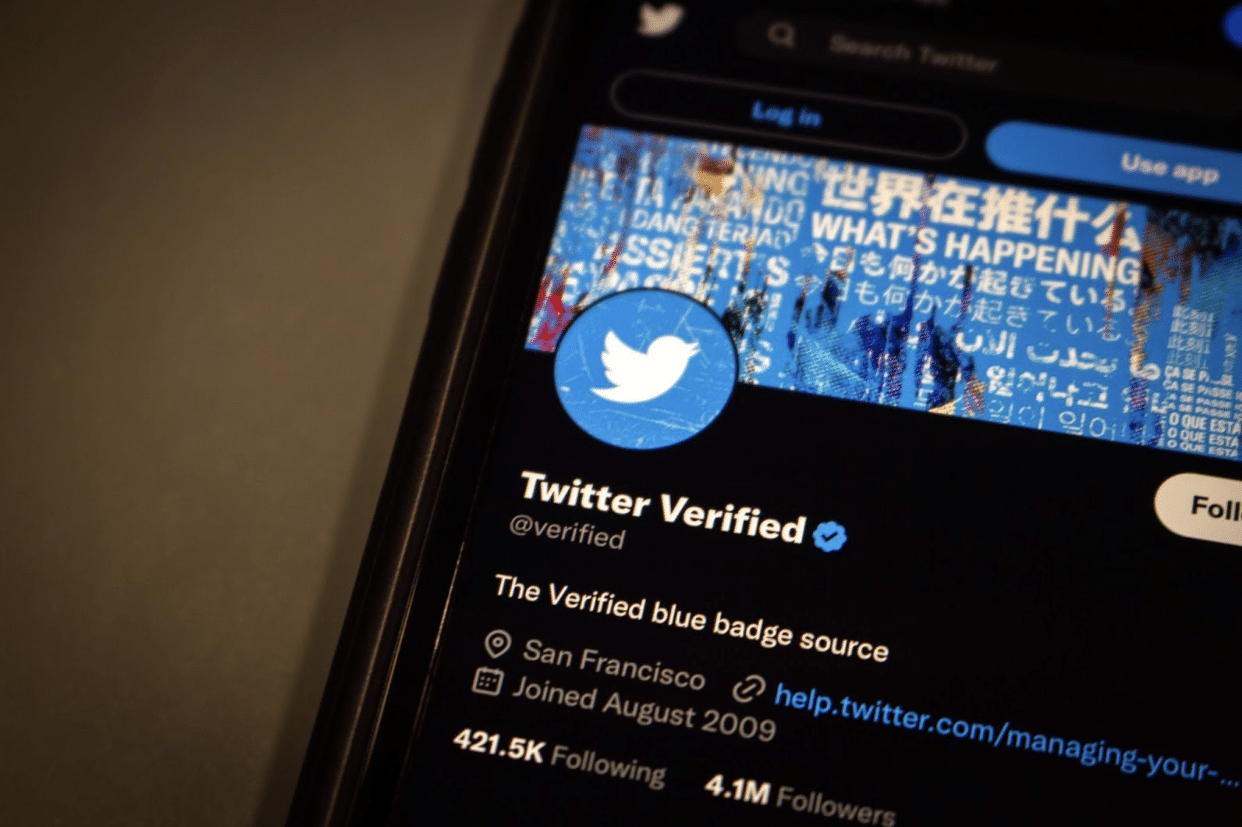Social media has become a crucial component of any digital marketing strategy, and social media branding is an essential aspect of building a strong online presence.
Your social media branding efforts play a vital role in how your brand is perceived online by creating a reputable brand image that can significantly impact brand recognition and build a compelling brand.
This guide will cover all aspects of social media branding, including developing a branding strategy, creating relevant content, optimizing social media profiles, and measuring social media success.
What is Social Media Branding?
Social media branding is establishing and promoting a brand’s identity, values, and personality on social media platforms through a social media post. With businesses’ ever-increasing use of social media, social media branding has become a critical part of any social media marketing strategy.
Social media platforms allow businesses to connect with their target audience through social media posts. These posts can range from informative to promotional and can help businesses establish their social media platform presence.
By crafting a compelling social media strategy, businesses can use these platforms to engage with social media users, increase brand awareness, and ultimately convert them into loyal customers.
Social media users are constantly being bombarded with information and advertising, so it is essential that businesses stand out. By establishing a strong social media brand, businesses can differentiate themselves from their competition and create a lasting impression in the minds of social media users.
Read More: Social Media Marketing Plan: A Guide to Success
What Are Social Media Brand Guidelines?
Social media brand guidelines are a set of instructions for companies when they use social media to retain their brand voice across all channels. The social media guidelines for brands tell companies how to show themselves online, like what colors and words to use.
This style guide is made and distributed by the social media manager to help keep the company’s look and feel consistent on different social media sites. They also help make sure the company’s posts are friendly and respectful. By following these rules, companies can make people recognize and trust their brand.
For instance, a social media brand guideline might specify using the company’s official colors (e.g., blue and white) consistently in all posts and graphics, and encourage a friendly and helpful tone in interactions with customers to maintain a consistent and approachable brand image.
Learn More: What to Know When Creating Landing Pages
How to Brand Social Media for Business?
Understanding Your Target Audience
Understanding your target audience is the first step in any social media branding game. You must identify who your target audience is, their needs and preferences, and what social media platforms they use. By understanding your target audience, you can develop a social media branding strategy that resonates with them. s
Here are some tips to help you understand your target audience better:
- Conduct market research: Conducting market research can help you gain insights into your target audience’s needs, preferences, and behaviors. This research can be done through surveys, focus groups, or online analytics tools.
- Analyze your social media metrics: Analyzing your social media metrics, such as engagement rates, follower growth, and click-through rates, can give you a better understanding of what types of content your target audience is engaging with.
- Use social media listening tools: Social media listening tools allow you to monitor conversations and mention your brand on social media. This can give you valuable insights into your target audience’s perceptions of your brand.
- Develop a brand voice: Developing a brand voice that resonates with your target audience can help you establish a stronger connection with them. Your brand voice should be consistent across all social media channels and should reflect your brand’s values and personality.
- Build a brand story: Your brand story should be compelling and should resonate with your target audience. It should articulate your brand’s purpose, values, and mission in a way that inspires and engages your audience.
- Develop a brand persona: Developing a brand persona can help you create a more personalized connection with your target audience. Your brand persona should align with your brand values and be consistent across all social media channels.
- Engage with your social network: Engaging with your social network can help you understand your target audience’s needs and preferences. Responding to comments and messages and participating in relevant social media conversations can also help you build a stronger relationship with your audience.
You May Also Like: Smart Budgeting: How to Spend Your Social Media Advertising Budget
Developing Your Brand Voice and Style
Your brand identity and core values should be the foundation of your social media branding guidelines.
Defining your brand voice and style helps create a consistent branding approach across all your social media channels. Your brand’s social media posts should be in line with your brand’s tone and personality to create a compelling brand online.
It is also important to create a strong and consistent brand presence. Hence, we should be careful in developing our brand tone and style. Here are some do’s and don’ts to keep in mind when developing your brand voice and style:
Do’s:
- Define your brand values and personality: Before developing your brand voice and style, it’s important to define your brand values and personality. This will help you create a voice that aligns with your brand’s identity and resonates with your target audience.
- Consider your target audience: Your brand voice and style should be tailored to your target audience. Consider their needs, preferences, and communication style when developing your brand voice.
- Be consistent: Consistency is key when developing your brand voice and style. Ensure your messaging and visual elements are consistent across all channels, including social media, website, and advertising.
- Use clear and concise language: Your brand voice should use clear and concise language that is easy for your target audience to understand. Avoid using jargon or technical terms that your audience may not be familiar with.
- Be authentic: Your brand voice should authentically reflect your brand’s values and personality. Avoid trying to mimic other brands or using a voice that is not authentic to your brand.
Don’ts:
- Be too generic: Your brand voice should be unique and stand out from your competitors. Avoid using generic messaging that doesn’t differentiate your brand.
- Use offensive language: Your brand voice should be inclusive, and avoid using offensive language or tone.
- Be inconsistent: Inconsistency in messaging or visual elements can weaken your brand image and confuse your audience.
- Overcomplicate your messaging: Keep your messaging simple and easy to understand. Avoid using complicated language or trying to convey too many ideas at once.
- Copy other brands: Avoid trying to copy other brands’ voices or styles. Your brand voice should be unique and reflect your brand’s identity.
Creating a Content Strategy
Creating a content strategy is essential to any social media marketing campaign. It’s important to create relevant content that engages social media users and is optimized for each social media platform. You should also develop a content calendar to ensure that your social media accounts are regularly updated with fresh and relevant content.
In fact, 60% of marketers say that creating a content strategy is a key factor in the success of their social media marketing efforts. (Source: Content Marketing Institute) and Brands that have a content marketing strategy in place see conversion rates 6x higher than their competitors who do not have a content strategy. (Source: Aberdeen)
Creating a content strategy can offer a range of benefits to businesses and individuals looking to improve their content marketing efforts. Here are some of the key benefits:
- Clear goals and objectives: A content strategy helps define clear goals and objectives for your content marketing efforts, enabling you to align your content with your overall business goals and track your progress over time.
- Targeted audience: By identifying your target audience, a content strategy helps you create content that resonates with your audience and addresses their needs and interests. This increases the chances of your content being shared and engaging with your audience.
- Consistency: A content strategy helps you maintain consistency in your messaging and tone across all your content channels. This strengthens your brand voice, builds trust and credibility with your audience, and helps establish you as a thought leader in your industry.
- Efficient use of resources: By focusing on creating high-quality content that delivers the greatest return on investment (ROI), a content strategy enables you to use your resources more efficiently, reducing costs and maximizing the impact of your content.
- Increased brand awareness: With a content strategy, you can create content that increases your brand awareness and positions you as a trusted authority in your industry. This can help you attract new customers, retain existing ones, and ultimately drive business growth.
Overall, a well-defined content strategy can help you create more effective, targeted, and engaging content that delivers results for your business or personal brand.
Optimizing Your Social Media Profiles
Optimizing your social media profiles is crucial in building a strong social media presence. You should ensure that your social media accounts are complete and up-to-date and that your brand identity and messaging are consistent across different social media networks. Visual branding is also essential in optimizing your social media profiles, as it helps increase brand awareness and recognition.
Different Social Media Networks to Consider
A picture and video-based platform, this is a great site to publish short content for viewers.
Pros:
- There are over 1 billion active Instagram accounts, with 25 million profiles belonging to businesses.
- The platform is known for its influencers willing to use their personal brand page to highlight your page. The perfect influencer network for your business could be one click away.
- The more likes and comments on your post in a short amount of time, the more followers will see it.
Cons
- 70% of posts aren’t seen on the platform.
- Posts are not chronological for viewers.
- There’s a focus on users’ engagement, meaning they only show what a user might be interested in.
Facebook is a social network that allows you to connect with your audience in a variety of ways through your content.
Pros:
- You can publish different kinds of content for your Facebook page, from blog posts to a video.
- With over 2 billion users worldwide, you have a broader audience to reach.
- Facebook supplies analytics to keep you up to date.
- While Facebook has a broad audience, it’s also great for reaching a target audience through a Facebook ad.
Cons:
- With everyone on Facebook, it can be hard to catch a user’s eye.
- Keep an eye on comments on your posts. Negative comments under posts can occur.
- Branding on the platform takes commitment to run as you make new connections with customers and keep track of your content.
Twitter is known for its short but sweet messages that connect people worldwide. You can publish different types of content, though there are limitations.
Pros:
- Twitter creates shortened URLs.
- You can schedule a tweet(s) to keep the brand consistent with content output.
- The platform has an in-house data tracker that can keep you updated on your content.
Cons:
- Using your Twitter account to create a community takes time.
- It’s quite easy for your business to be deemed a spammer while promoting your brand, losing your credibility.
- The social platform comes with limitations. First, you can only tweet 140 characters in a tweet. Also, Twitter users can only follow 2000 accounts. That means you’re fighting against celebrities, other businesses, and someone’s best friend to get their attention
Youtube
Visual content platform is great for long-form video content and informative content.
Pros:
- A video provides great visuals to keep viewers’ attention.
- You can create video ads that other content creators can share on their Youtube channels.
- Unlike other platforms, like Instagram, there’s no limit to how long your content can be.
Cons:
- Your video can be connected to other videos that have nothing to do with you.
- The point of using social media is to promote your brand. Youtube videos require their own promotion, which can be a hassle.
- Every “like” you get on a video doesn’t mean you get a customer.
You May Also Like: 9 Tips to Make Your Business Stand Out on Instagram
Building Your Social Media Following
Building a social media following requires consistent branding and community management efforts. You can leverage social media platforms to connect with your audience and increase engagement with your brand.
Influencer marketing is also an effective strategy to increase your brand’s social media following.
Here are some ideas that can help you build a solid social media following:
1. Define Your Brand’s Identity and Messaging:
Before you start building your social media following, defining your brand’s identity and messaging is essential. What is your brand’s voice, personality, and tone? What message do you want to convey to your audience? Once you clearly understand your brand’s identity and messaging, you can create a social media strategy that aligns with your brand’s goals and values.
2. Consistent Branding
Consistent branding across all social media channels is crucial to building a strong following. Use the same profile picture, bio, and cover image across all channels. Ensure that your brand’s visual elements, such as colors and fonts, are consistent across all channels as well. This will help your audience recognize and remember your brand.
3. Engage With Your Audience
Engaging with your audience is key to building a strong social media following. Respond to comments, messages, and mentions promptly. Ask questions, run polls, and encourage your audience to share their opinions. This will help create a sense of community around your brand and keep your audience engaged.
4. Share Valuable Content
Share valuable and relevant content that resonates with your audience. This could include blog posts, infographics, videos, and images. Ensure that your content is high-quality, informative, and entertaining. Use hashtags to increase the visibility of your posts and reach a wider audience.
5. Influencer Marketing
Influencer marketing is a powerful way to increase your brand’s social media following. Collaborate with influencers who have a similar target audience as yours. They can help you reach a wider audience and build credibility for your brand.
Measuring Your Social Media Success
Measuring your social media success is essential in determining the effectiveness of your social media branding strategy. You should track metrics such as engagement, reach, and conversions to analyze your social media marketing efforts’ effectiveness. There are various tools available to help you track and analyze social media metrics.
To measure your social media success, you must
- Track and analyze various metrics, such as engagement, reach, and conversions.
- Utilize Engagement metrics, such as likes, comments, shares, and retweets, to help you determine how well your content resonates with your audience.
- Reach metrics, such as impressions and reach, help you understand how many people are seeing your content.
- Use Conversion metrics, such as click-through rates (CTRs) and sales, help you understand how many people are taking action based on your social media content.
To track these metrics, various social media analytics tools are available, such as
- Google Analytics
- Hootsuite
- Sprout Social
- Buffer
These tools help you track and analyze your social media performance across different platforms, such as Facebook, Twitter, Instagram, and LinkedIn. You can use these tools to track the performance of individual posts, campaigns, and overall social media accounts.
Read More: Optimize Social Media for Lead Generation
Conclusion
In conclusion, social media branding is critical to building a compelling brand online. By developing a social media branding strategy that resonates with your target audience, creating relevant content, optimizing your social media profiles, building your social media following, and measuring your social media success, you can increase your brand awareness and recognition.
However, building a successful social media brand is not a one-time task, but rather an ongoing process. It requires consistent effort, engagement, and analysis to keep your brand relevant and engaging to your followers.
If you’re looking for more resources on social media branding, be sure to check out LeadAdvisors. They offer guest blogging and branded content services that can help you create a strong social media presence and build your brand’s authority in your industry.
By investing in your social media branding, you can attract and retain more customers, increase brand loyalty, and ultimately drive more business success. So, start implementing these strategies and watch your social media brand grow!
Spend less time on marketing and more on creating, get a quote now.
What are the five elements of branding?
The elements of branding are the voice of your brand, brand identity, brand promise, the values of your brand, as well as the position and targeting of your brand.
What’s the most important aspect of branding?
The story. Everyone loves a good story. While the actual product or service you supply is important, there’s more than likely a slew of competitors that offer the same thing. Your story is what makes you stand out to your customers and what will keep them coming back.
What are the three essential parts of branding?
The three essential parts of branding are the content you publish, the consistency of that content, and the community you create with your users around that content. If you publish content your users want to see on a consistent basis, and take the time to connect with your media followers to cultivate a community, you’ll have a successful brand.




















